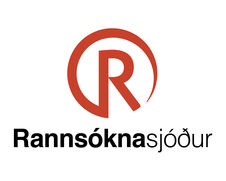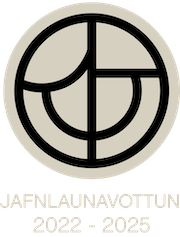Áreiðanleiki og óvissugreining á jarðskjálftahættu á Íslandi - verkefni lokið
Fréttatilkynning verkefnisstjóra
Í þessu verkefni voru lykilforsendur mats á skjálftavárlíkindum endurskoðaðar vegna þess hvað fyrri forsendur í slíku mati og sérstaklega óvissa í lykilþáttum sem liggja til grundvallar matinu leiða af sér óáreiðanlegt og í sumum tilfellum rangt mat á skjálftavá.
Mat á skjálftavárlíkindum vegna sterkra jarðskjálfta á brotabelti Suðvesturlands liggur til grundvallar mannvirkjahönnun á þéttbýlasta svæði landsins og þar með áhættustýringar á áhrifum og afleiðingum jarðskjálfta á nútíma samfélag.
Í verkefninu hafa því verið þróuð ný dvínunarlíkön sem lýsa eigindum jarðskjálftahreyfinga með skjálftastærð og fjarlægð frá upptökum og jarðfræði undirlagsins mun betur en áður hefur þekkst, sér í lagi í nærsviði stórra jarðskjálfta þar sem yfirborðshreyfingar verða mestar og skemmdir því líklegastar á mannvirkjum. Auk þess hefur verið sett fram nýtt þrívítt líkan af jarðskjálftasprungum á þverbrotabelti Suðvesturlands og hefur það verið kvarðað við hraða og stefnu landreks á Íslandi. Líklegar staðsetningar jarðskjálfta á Suðvesturlandi og jarðskjálftavirkni þeirra sem hið nýja líkan segir til um er í fullu samræmi við jarðskjálftavirkni svæðisins út frá sögulegum skjálftaskrám. Hið nýja líkan varpar skýrara ljósi á breytileika jarðskjálftavirkni á brotabeltinu og í raun útskýrir jarðskjálftasögu Suðvesturlands. Þar með hafa verið settar fram í þessu verkefni traustar stoðir undir þær þrjár grundvallarforsendur eðlisfræðilegs mats á skjálftavárlíkindum: upptakalíkan
jarðskjálfta, jarðskjálftavirkni líkansins, og ný líkön af dvínun jarðskjálftahreyfinga með skjálftastærð, fjarlægð og yfirborðsjarðfræði. Líkönin hafa verið kvörðuð með Bayesískum tölfræðiaðferðum sem nýta þá þekkingu á óvissunni sem þegar er fyrir hendi. Í verkefninu hefur þessum aðferðum verið beitt til þess að meta grunneiginleika skjálftavárlíkinda fyrir staði í nærsviði stórra jarðskjálfta sem og í fjarsviði, hvort um sig. Nýjum aðferðum við mat á skjálftavárlíkindum hefur verið beitt sem tilgreina betur en áður hefur verið gert hversu mikil óvissan er á matinu og hvaða þættir ráða þar mestu. Þannig hefur langtíma mat á skjálftavárlíkindum verið framkvæmt fyrir brotabelti Suðvesturlands, bæði með hefðbundnum aðferðum, en einnig með eðlisfræðilegum aðferðum. Í því síðarnefnda er átt við að gerviskjálftaskrár hafa verið hermaðar fyrir Suðvesturland og flókið brotferli jarðskjálftasprungna hermað á hverri gerviskjálftasprungu og hafa yfirborðshreyfingar á fjölda af gerviskjálftastöðvum á Suðvesturlandi þannig verið hermaðar. Í þessu verkefni hefur því verið lagður grundvöllur fyrir nýtt eðlisfræðilegt mat á skjálftavárlíkindum á brotabelti Suðvesturlands, sem er forsenda bættrar jarðskjálftahönnunar mannvirkja og áhættumats á áhrifum jarðskjálfta á nútíma samfélag. Þetta verkefni leggur því grunninn fyrir endurskoðun skjálftavárlíkinda á Íslandi.
English:
Seismic hazard assessment from strong earthquake occurrence on the Southwest Iceland transform zone forms the basis for earthquake resistant design of structures in this most densely populated region of Iceland and thereby risk management of the effects and consequences of earthquake on our modern society. In this project the key assumptions for a probabilistic seismic hazard assessment (PSHA) have been completely revised due to their limitations in prior estimates, in particular in the models used and uncertainties in key parameters and assumptions that have led to unreliable and in some cases wrong estimates. We have developed new ground motion models (GMM) that quantify how seismic ground motion scales with earthquake magnitude, distance from the earthquake source, and localized geology. In particular, we have focused on the near-fault region of earthquakes, where their effects are the largest and damage the most to the built environment. The GMMs have been developed using advanced Bayesian statistical methods that quantify all pertinent uncertainties. We have developed a new 3D earthquake fault system model for the transform belt of Southwest Iceland and calibrated it to the rate of tectonic plate motions in the region. The location of earthquake faults and their seismic activity are fully specified by the new model, which effectively explains the historical earthquake catalogues in the region. We have used state-of-the-art methods to apply the new models in a revision of PSHA for key sites in Southwest Iceland, one in the near-fault region and one in the far-field, respectively. The revised PSHA estimates are now accompanied by uncertainty measures that reflect the limits of the knowledge level used in PSHA, thereby allowing both scientists
and stakeholders to assess the confidence in the hazard estimates, which facilitates decision making. In addition, we used the new fault system model to simulate a synthetic finite-fault earthquake catalogue, and incorporated it in kinematic simulation of earthquake rupture each of which generates synthetic time histories at a grid of synthetic stations in Southwest Iceland. The
simulations sample the variability of earthquake rupture and capture all salient features of near-fault motions. Therefore, in this project we have laid a solid physical foundation of the key elements of PSHA, in particular physics-based PSHA, which is the prerequisite for improved hazard estimates, and thereby seismic design and risk assessment. The methods, models and results produced in this project will not only facilitate reliable PSHA, but effectively usher in a new era of physics-based PSHA that has important implications for the revision of seismic hazard in Iceland.
· A short easily understandable description of the project, its results and impact
In this project, probabilistic seismic hazard assessment (PSHA) for Iceland was revised in terms of its sensitivity to its key inputs that generally contain large uncertainties. These uncertainties can
significantly affect the hazard results and can be identified in all the inputs of PSHA, including
characteristics of the seismic sources, seismicity parameters and selection of ground motion models (GMMs). To this end, first the seismicity parameters which were poorly determined due to large uncertainties in the Icelandic earthquake catalogue should be reassessed. For this purpose, we first proposed a new physics-based finite-fault system model for the transform fault systems of the SISZ and the RPOR. Constrained by known historical and mapped fault locations, historical and instrumental seismicity, geophysical information. Then we estimated the seismicity rates of each zone that are not dependent on the existing catalogue were provided. For this purpose, first the distinct faults of the fault system model that fall inside each zone were identified. On the basis of their total annual slip and moment rates in each zone, the corresponding magnitude-frequency relationship was estimated using an iterative version of the method proposed by Brune (1968) that estimates the fault slip rate from a magnitude-frequency relationship. Therefore, from the complete description of the physical model, we developed simple and equivalent Gutenberg-Richter models for subregions of the transform zones (something that the limited earthquake catalogues never could produce) which in turn allows a more accurate approach to standard-practice PSHA. Then, the GMMs and its associated uncertainties as the most important element of any PSHA, was studied. We quantified epistemic uncertainties associated with the GMMs and performed a comprehensive backbone PSHA that uses new Bayesian ground motion models. Finally, a global sensitivity analysis will be applied to investigate the influence for uncertainties in the seismicity parameters and GMMs on the PSHA results in Iceland.
Impacts:
This project revolved around basic research on engineering seismology and earthquake engineering using physical and empirical models, and physical interpretation facilitated by novel statistical methods. The project therefore has practical applications in engineering practice as well as basic scientific implications. While the impact of the research is expected to take some time to manifest, it is however clear that the project will have the following distinct impacts:
• A new 3D physics-based fault system model of the bookshelf strike-slip faults in the SISZ-RPOR
has been developed.
• The near-fault synthetic time histories have been generated using CyberShake to reveal the
scaling of key near-fault GMM parameters.
• A set of new near-fault GMMs was developed using an advanced Bayesian statistical model.
• Epistemic uncertainties associated with the GMMs were quantified using a backbone
approach for use in PSHA for Southwest Iceland.
• Moreover, we have tested the validity of the results through formal sensitivity analysis to
investigate the influence of input variables on the PSHA results.
· Information on how the results will be applied
The results of this project have been applied in the European ChEESE (2018-2021, H2020, No. SEP-
210491613) project. We developed a new 3D physics-based fault system model of the bookshelf
strike-slip faults in the SISZ-RPOR that not only quantifies the location of the earthquake fault system but captures the long-term seismic activity of the region, thus effectively explaining the historical earthquake catalogue. In the ChEESE project, this model has been formally incorporated into CyberShake, the physics-based earthquake rupture modeling and ground motion simulator
developed by Southern California Earthquake Center and the foundation of physics-based PSHA (PBPSHA) for California. Moreover, the earthquake source rupture scaling laws in CyberShake have been adjusted to accurately represent the unique earthquake source scaling in South Iceland, a result of a collaboration between ChEESE and RANNIS. As a result, the simulator captures all salient features of near-fault velocity pulses from strong Icelandic earthquakes. Then, CyberShake has been applied in the simulation of multiple earthquake rupture scenarios for each event capturing the variability in the hypocentral locations, and the corresponding three-component synthetic ground motion time histories simulated at every station of a dense grid of 594 hypothetical stations in Southwest Iceland. As a result, the largest synthetic dataset of physically realistic seismic ground motion time histories has been produced for the SISZ-RPOR that consists of ∼1 Million event-station pairs i.e., sets of threecomponent synthetic ground motion time histories. Moreover, the results of this project will be provided to the Eurocode 8 national standards committee for Iceland for consideration for the formal official PSHA revision. Such updates will directly affect decision-makers and stakeholders such as earthquake and structural engineering community, which will lead to a significant reduction in uncertainties regarding seismic hazard in Iceland, and therefore the optimization of seismic risk mitigation. Moreover, the results of this project will be made known to the National Commissioner of Icelandic Police responsible for Civil Protection along with local Municipality Civil Protection boards in Southwest Iceland to enhance the earthquake response and therewith the community resiliency.
· A list of the project’s outputs
(1) New parametric estimates of seismicity parameters (i.e., Gutenberg–Richter, G–R, relationship
parameters, earthquake activity rate and maximum magnitude) and quantifying their variability for
earthquake sources in Iceland;
(2) A set of Bayesian ground motion models for Iceland
(3) A new physics-based 3D fault system model for Southwest Iceland
(4) A physics-based finite-fault earthquake catalogue, consistent with the 3D model, for use in
probabistic seismic hazard assessment (PSHA)
(5) New hazard uncertainty maps for PGA/PSA at different hazard levels and the the effects of different empirical ground motion models on seismic hazard maps for North Iceland
(6) Estimation of the epistemic uncertainty in ground motion models for South Iceland seismic zone earthquakes
(7) Site specific PSHA for key sites in Southwest Iceland using a new backbone approach, includeing performing the disaggregation of the seismic hazard to identify hazard-dominating events
(8) A new near-fault seismic ground motion model for Southwest Iceland
Heiti verkefnis: Áreiðanleiki
og óvissugreining á jarðskjálftahættu á Íslandi / Reliability of earthquake
hazard assessment in Iceland: improved models, uncertainties and sensitivities
Verkefnisstjóri: Benedikt Halldórsson, Háskóla Íslands
Tegund styrks: Verkefnisstyrkur
Styrktímabil: 2019-2021
Fjárhæð styrks kr. 55.007.000
Tilvísunarnúmer Rannís: 196089


